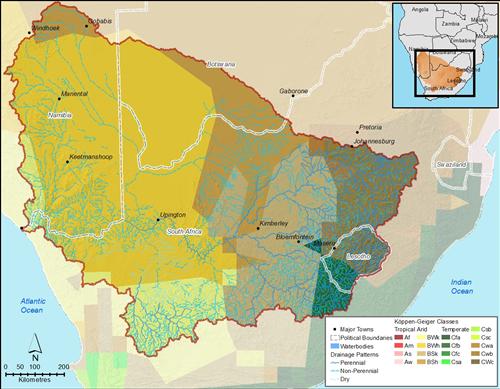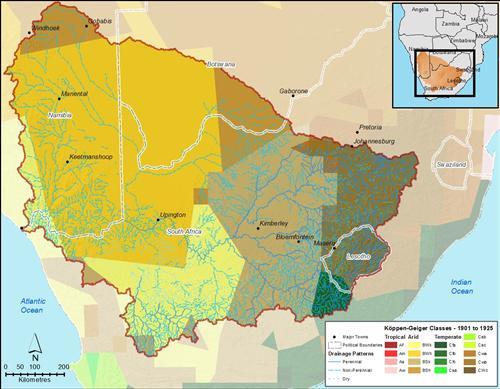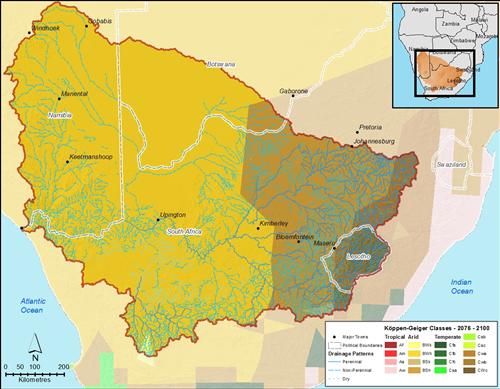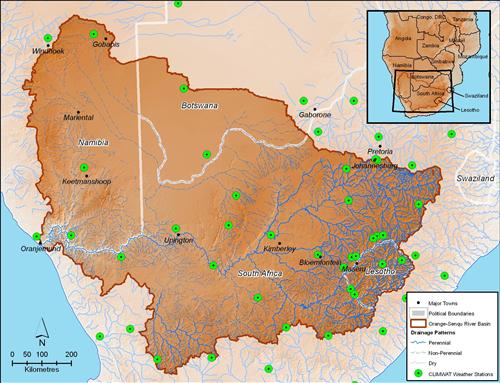In the Köppen climatic classification, the Orange-Senqu River basin falls into the B (Dry Arid and Semi-Arid Climates) and C (Moist Subtropical Mid-Latitude Climates) classes.
For more information on the criteria used to define the Köppen classification, please refer to the Physical Geography.net website.
The distribution of these climate classification zones and the sub-divisions are displayed in the map below.

Köppen classes for climate in the Orange-Senqu River basin.
Source:Kottek et al. 2006
( click to enlarge )
For more information on the criteria used to define the Köppen classification, please refer to the University of Veterinary Medicine of Vienna Köppen-Gieger website http://koeppen-geiger.vu-wien.ac.at/index.htm
Climate Classification Modelling
The University of Veterinary Medicine of Vienna has also used historical climate records from the German WeatherService Global Precipitation Climatology Centre (GPCC), to develop a global retrospective assessment of Köppen-Gieger Classes for the period of 1901 to 1925. Furthermore, they have used inputs from global climate models to develop a projected Köppen-Gieger Climate Classification for 2076 to 2100.

Retrospective Köppen-Gieger Climate Classification for the Orange-Senqu River basin (1901 - 1925).
Source:Rubel and Kottek 2010
( click to enlarge )

Projected Köppen-Gieger Climate Classification for the Limpopo River basin (2076 - 2100).
Source:Rubel and Kottek 2010
( click to enlarge )
Meteorological data availability
The national meteorological agencies of the Orange-Senqu River basin riparian states have contributed information to the FAO’s database of world climate, known as the CLIMWAT database (FAO 1993). Climate data for stations across the basin are available from CLIMWAT (Alemaw and Sebusang 2008). The distribution of these stations is presented in the map below

Distribution of climate stations contributing to the FAO CLIMWAT database.
Source:Hatfield 2009, after Alemaw and Sebusang (2008): FAO (1993)
( click to enlarge )
